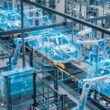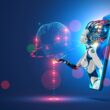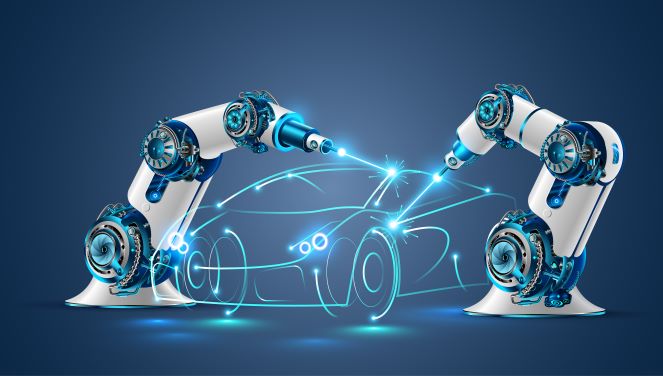Nvidia Omniverse™ – what is it?
A 3D simulation and design platform are now available in open beta from graphics company NVIDIA at the inaugural keynote celebrating GPU Technology. NVIDIA Omniverse™ is the ultimate solution for virtualizing and collaborating on 3D production pipelines using a real-time, virtualized multi-GPU simulation engine powered by Pixar’s Universal Scene Description and NVIDIA RTX. Digital artists will find the Omniverse™ useful and similar to what software developers use today, the Git collaboration platform. As a framework for data exchange between 3D computer graphics and the platform, USD (Universal Scene Description) was developed by the University of Southampton. It is specifically focused on collaboration.
USD is not just a file format, but also a method of handling image properties, layering, lazy loading, instancing, and a number of other features. The Nucleus DB service provides exchange via USD for Omniverse. Omniverse is built on NVIDIA’s Nucleus scene database and is extensible. There are a number of ways to integrate our 5G-specific simulators with other simulation assets, as well as virtual RAN assets.
It ensures interoperability between multiple vendors and applications through NVIDIA Omniverse™. By using the application, users can get real-time updates on the scene. There are open standards implemented in it, and it is open source. Any connected client or application can access the new functions by connecting them to the Omniverse Platform.
Modularity and performance are central to the Omniverse platform. Omniverse Kit lets you build extensions, microservices, and applications. The Omniverse platform allows real-time interaction between apps by only transferring deltas between them.
Features of NVIDIA Omniverse™
- Ray Traced Viewports are available on multiple GPUs for high-quality real-time path tracing and ray tracing on USD content.
- With USD and MDL, live collaboration between your favorite 3D applications.
- Utilizing the latest in NVIDIA technology to simulate complex 3D physical worlds at high performance.
MDL (Material Definition Language) is NVIDIA’s open-source version of a language used to represent materials in Omniverse. NVIDIA developed a customized schema in USD to facilitate interoperability between material definitions that might be used for different applications. Using this standard definition, properties can be uniform, if not identical, across various applications.
Structure of the NVIDIA Omniverse™
An open graphics platform, NVIDIA Omniverse™ is the best solution for real-time interaction, collaboration, and shared virtual worlds. A major goal of the Omniverse platform is to make different applications and vendors universally interoperable. The scene updates are fluid, due to the use of open standards and protocols. Open APIs such as Omniverse serve as hubs that enable applications and clients to access newly connected capabilities as desired.
In total, there are five components of the Omniverse: Connect, Kit, Nucleus, Simulation, and RTX Renderer. A third-party digital content creation tool (DCC) is also part of Omniverse’s integrated ecosystem.
1. NVIDIA Omniverse™ Connect
Through DCC tools and computer services, NVIDIA has created extensions and additional software layers, known collectively as NVIDIA Omniverse™ Connect, that let them communicate smoothly through the Omniverse Nucleus DB.
The Nucleus DB can be accessed by client applications using the Omniverse™ Connect libraries, and assets can be published and subscribed to. The most challenging aspect of creating a proper NVIDIA Omniverse™ plug-in for existing DCC tools is setting up a two-way synchronization between scene representations in the USD library and whatever representations are used by the tool internally. In USD library applications, there is no synchronization required with the database.
After any necessary synchronization is achieved, the DCC plugin will be able to publish internally generated updates and apply externally received updates using the NVIDIA Omniverse™ Connect libraries. This is especially easy with the NVIDIA Omniverse™ Connect libraries. NVIDIA Omniverse™ Connect keeps track of all the local changes made since the last publishing event as the application updates its USD representation of the scene. The NUCLEUS DB will be checked for differences for files across all subscribers through the NVIDIA Omniverse Connect libraries.
2. NVIDIA Omniverse™ Nucleus
Omniverse’s Nucleus is the hub of the Omniverse ecosystem, allowing diverse Omniverse-aware client applications (Apps, Connectors, and etc.) to access and alter authoritative world representations in real-time. A nucleus is not just a machine, it sits on a network somewhere, sharing a virtual world with clients that are following the same authority.
Live synchronization is possible with Omniverse Nucleus. Using the publication/subscription model, multiple Clients can be interconnected so that any change made to one Client (publishing) is reflected in all Clients (subscribers). An asset tree represents the hierarchical arrangement of asset data. End users see the file tree as just another file tree, complete with subdirectories and directories. The user can upload, download, and move files; directories can be created, deleted, and listed.
3. NVIDIA Omniverse™ Kit
Native Omniverse™ applications and microservices can be developed using the NVIDIA Omniverse™ Kit. Powered by the Carbonite framework, it offers a variety of lightweight plugins that add a variety of functionality. As part of maintaining ABI compatibility, Carbonite plugins are written using C interfaces. With the Python interpreter provided, scripting and customization are easy.
With the Omniverse Kit, you can create tools and microservices that are connected to the Omniverse. A microservice can be created headless, or a UI can be used. Python generates the UI dynamically, so it can be fully customized. Dear Imgui is used to create UI widgets that are native to Omniverse Kit.
Omniverse Kit also functions as a USD editor, layout tool, and inspector. The UI of a customized application might look completely different. NVIDIA anticipates shipping customized solutions for specific industries and business communities within the next few months.
A UI app that uses the Omniverse Kit can render windows. USD applications use a rendering interface called Hydra that is available in the USD distribution. It is possible to use Omniverse Kit render windows in conjunction with Hydra-compliant renderers. Many Hydra-compliant renderers are available, including AMD’s ProRender and NVIDIA’s Omniverse.
4. NVIDIA Omniverse RTX™ Renderer
NVIDIA® ‘s Omniverse RTX Renderer is an industry-leading real-time ray-tracing renderer for Omniverse. NVIDIA® RTX GPUs provide industry-leading quality with a near real-time performance by utilizing their RT Cores. It offers real-time interaction and ray-tracing options, thus proving accuracy even for large scenes.
5. NVIDIA Omniverse™ Simulation
The simulation functionality in NVIDIA OmniverseTM is provided by plug-ins and microservices included in the Omniverse Kit. It is among the first simulation programs distributed by Omniverse to be used in computer games, NVIDIA’s PhysX. The USD schema provided here specifies all objects that will be participating in the simulation, as well as the constraints and solver parameters. Editing the simulation set-up, starting and stopping the simulation process, and adjusting all parameters are all possible.
Omniverse can be beneficial to anyone interested in simulation.
This includes (but is not limited to)…
- Robotics
- Architecture, Engineering and Construction (AEC)
- Film and TV (M&E)
- Special Effects
- HPC Visualization
- Drive Simulation
- Game Development
- Synthetic Data Generation (AI)
NVIDIA Omniverse Works for :
➢ NVIDIA Omniverse™ for Virtual Collaboration
NVIDIA Omniverse™ is a real-time simulation platform built for virtual collaboration as well as a physical simulation in real-time. By connecting leading design tools, assets, and projects to a shared virtual workspace, complex creator, designer, and engineering workflows are transformed.
A platform that combines the best 3D modeling tools and an overview from the user’s perspective. In addition to being instant, workflows are simplified as there is no preparation required for updates and iterations.
In terms of real-time path tracing and ray tracing, Omniverse is scalable and delivers true, real-time ray tracing. Real-time realistic visuals that are beautiful, physically accurate, and photorealistic. Build once, render anywhere. Any device can stream NVIDIA RT XTM-enhanced photo realism. Your work should be presented properly so you can share it easily.
➢ NVIDIA Omniverse™ for Scientific Visualization
Using visualization is the most effective method of analyzing large simulation data sets. Even though the size of the simulation results keeps growing, they require tools that are interactive, photo-realistic, and allow real-time collaboration. Researchers can collaborate in real-time with NVIDIA Omniverse™ to accelerate discovery, analysis, and publishing of scientific breakthroughs. Adaptive networking enables researchers in different parts of the world to collaborate in real-time on the same data while accessing, analyzing, and altering it together.
By enabling researchers to quickly and intuitively explore large volumes of volumetric and 2D data in real-time with Omniverse, researchers can easily visualize and explore large volumes of data in Omniverse. Omniverse uses 3D geometry and advanced ray tracing to build photorealistic visualizations but also to highlight insights that would be lost if the data were 2D.
➢ NVIDIA Omniverse™ for Engineering, Construction, and Architecture
A photorealistic simulation platform like NVIDIA Omniverse™ allows collaboration in real-time. Architects and designers are increasingly required to collaborate efficiently, render rapidly through iterations, and simulate and model with high accuracy. NVIDIA Omniverse™ offers AEC and architecture (AEC) professionals an innovative solution to overcome these challenges.
➢ NVIDIA Omniverse™ for Media and Entertainment
A globalized workforce is driving the development of new production pipelines as the Film, Television, and Broadcast industries undergo rapid change. Creators can use NVIDIA Omniverse™ to create, collaborate, and iterate across a variety of creative applications in order to deliver results quickly. Studio staff can now work together from anywhere, maximizing productivity, improving communication, and boosting creativity.
With the latest simulation and artificial intelligence technologies from NVIDIA, you can simulate realistic and complex worlds quickly and easily. The NVIDIA RTX platform delivers real-time, high-quality, multi-GPU ray tracing.
➢ NVIDIA Omniverse™ for Revolutionizing Manufacturing
Physical products have never been more challenging to develop and manufacture in an increasingly globalized world. Across geographically dispersed design and engineering teams, contractors and suppliers must communicate and synchronize. Collaborative projects have never been easier thanks to NVIDIA Omniverse.
Omniverse seamlessly connects everyone and everything throughout the entire process, from concept development to robotics and automation. By utilizing a digital twin in a logistics-heavy environment, AI factories can avoid overbooking, plan better, and optimize the production process. By combining data from a variety of applications, the company can generate business-critical insights in real-time, which is crucial to the product design and manufacturing process.











3 comments